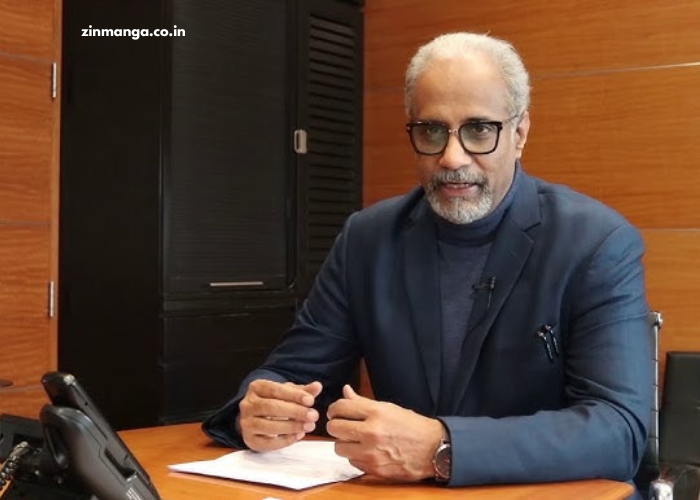In today’s world, managing your finances is more important than ever. Whether you’re trying to pay off debt, save for the future, or simply get a better handle on your monthly expenses, effective budgeting is the key to achieving your financial goals. In this article, we’ll dive into personal finance tips that can help you manage your budget effectively, reduce stress, and set yourself up for long-term financial success.
Why Budgeting Matters
Budgeting is the process of creating a plan for how to spend your money. It’s important because it allows you to track your income, allocate funds for necessary expenses, and save for future goals. Without a budget, it can be easy to overspend or overlook essential savings, leading to financial stress and missed opportunities.
By managing your budget effectively, you can gain better control over your finances, prevent overspending, and build a solid foundation for your financial future.
Key Steps to Effective Budgeting
Effective budgeting involves more than just tracking your expenses. It requires setting clear financial goals, prioritizing your spending, and being disciplined about your finances. Let’s break down the key steps to managing your budget successfully.
Step 1: Understand Your Income and Expenses
The first step in creating a budget is understanding your income and expenses. Take the time to track all of your sources of income, including your salary, freelance work, or passive income from investments.
Next, make a list of all your expenses. These can be broken down into two categories:
- Fixed expenses: These are the expenses that stay the same each month, such as rent, mortgage payments, utilities, and insurance premiums.
- Variable expenses: These fluctuate each month, like groceries, transportation, entertainment, and dining out.
Once you’ve identified both types of expenses, you can get a clear picture of where your money is going. This will help you prioritize your spending and find areas where you can cut back.
Step 2: Set Financial Goals
A budget without goals is like a journey without a destination. Setting clear financial goals will give you something to work towards and help you stay motivated. Financial goals can be short-term, medium-term, or long-term.
- Short-term goals: These are goals you can achieve within the next year, such as building an emergency fund or paying off credit card debt.
- Medium-term goals: These are goals that take a few years to achieve, like saving for a down payment on a house or paying off student loans.
- Long-term goals: These goals span several years, such as saving for retirement or building wealth for future generations.
By setting specific, measurable, achievable, relevant, and time-bound (SMART) goals, you’ll have a clearer roadmap for how to manage your money.
Step 3: Categorize Your Spending
Once you’ve tracked your income and expenses, and set your financial goals, it’s time to categorize your spending. The goal is to allocate your income towards necessary expenses, savings, and discretionary spending in a way that aligns with your goals.
Here are a few common categories to consider:
- Essentials: These include housing, utilities, transportation, and groceries.
- Debt repayment: Allocate funds for paying off high-interest debt like credit cards or loans.
- Savings: Aim to save a percentage of your income for future goals, such as retirement, an emergency fund, or a vacation.
- Discretionary spending: This includes non-essential items like dining out, entertainment, and shopping.
Tracking where your money is going and ensuring it aligns with your priorities is essential for staying on track with your financial goals.
Step 4: Cut Unnecessary Expenses
After reviewing your spending categories, look for areas where you can cut back. Cutting unnecessary expenses doesn’t mean eliminating everything you enjoy; it simply involves being mindful of your choices and finding ways to reduce costs without sacrificing quality of life.
For example, you can:
- Cook at home more: Instead of dining out, consider cooking meals at home to save money.
- Cancel subscriptions: Review any subscriptions or memberships you no longer use and cancel them.
- Shop smarter: Look for sales, discounts, or consider purchasing second-hand items when possible.
By making small changes to your spending habits, you can free up more money for savings and debt repayment.
Step 5: Automate Your Savings
One of the most effective ways to manage your budget is by automating your savings. Set up automatic transfers from your checking account to a savings account each month. This ensures that you’re consistently saving, even when life gets busy.
You can automate:
- Emergency fund contributions
- Retirement savings
- Debt repayment
By automating your savings, you’ll be less tempted to spend the money and more likely to stay on track with your financial goals.
Step 6: Build an Emergency Fund
An emergency fund is a crucial part of effective budgeting. It’s a savings cushion that can help you cover unexpected expenses, such as medical bills, car repairs, or job loss, without derailing your financial plan.
Aim to save at least three to six months’ worth of living expenses in an easily accessible account. Start by setting aside a small amount each month until you reach your goal.
Step 7: Monitor Your Budget Regularly
Managing your budget is an ongoing process. It’s essential to monitor your spending regularly to ensure you’re staying on track. Make it a habit to review your budget weekly or monthly to see if any adjustments are needed.
If you notice that you’re overspending in certain categories or if your financial goals are no longer aligned with your budget, take the time to make necessary changes. Regular monitoring ensures that you don’t lose sight of your objectives and can make course corrections when needed.
Tools and Resources for Budgeting
In addition to the steps outlined above, several tools and resources can help you manage your budget more effectively. These tools can automate calculations, track expenses, and offer insights to improve your financial habits.
Budgeting Apps
Budgeting apps are an excellent way to track your spending and keep your finances organized. Some of the top budgeting apps include:
- Mint: This app connects to your bank accounts and credit cards to automatically track your spending and categorize transactions. It also offers budgeting tools, bill reminders, and credit score monitoring.
- YNAB (You Need A Budget): YNAB is a popular app for people who want to be more intentional with their money. It offers a unique approach to budgeting, focusing on zero-based budgeting and helping you prioritize your spending.
- PocketGuard: This app helps you see how much disposable income you have after accounting for bills and savings goals. It also suggests ways to save money based on your spending habits.
Spreadsheets
If you prefer a more hands-on approach, spreadsheets can be a great option for budgeting. You can create custom categories, track expenses manually, and make changes as needed. Popular spreadsheet programs like Google Sheets or Microsoft Excel offer templates for personal finance that can help you get started quickly.
Financial Advisors
If you’re unsure about how to manage your budget effectively or need help with long-term financial planning, consider seeking advice from a financial advisor. A certified financial planner (CFP) can help you create a personalized financial plan based on your goals and current financial situation.
Conclusion
Managing your budget effectively is essential for achieving your financial goals and securing your financial future. By following the steps outlined in this article—understanding your income and expenses, setting clear financial goals, categorizing your spending, cutting unnecessary expenses, automating savings, building an emergency fund, and monitoring your budget regularly—you’ll be well on your way to financial success.
Remember, budgeting is not a one-time task; it’s an ongoing process that requires discipline and regular adjustments. With the right mindset, tools, and strategies, you can take control of your finances, reduce stress, and create a brighter financial future for yourself and your loved ones.




